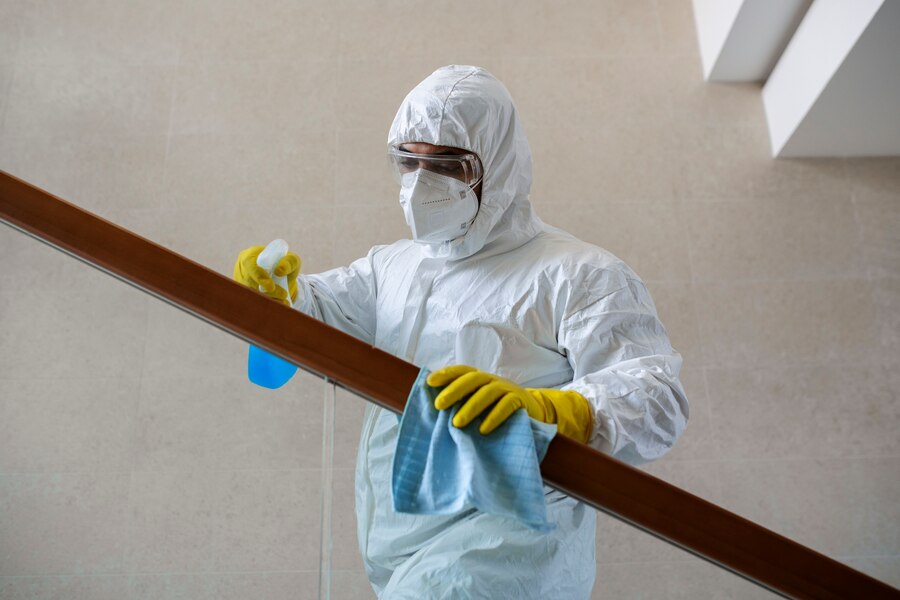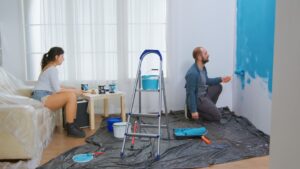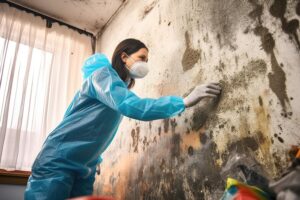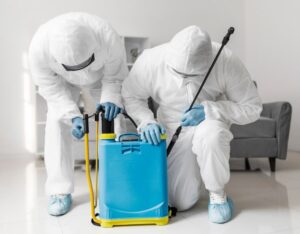Mold growth in the workplace can lead to numerous health concerns for employees, including respiratory issues, allergies, and even long-term illnesses. Industrial Hygiene in Mold Prevention and Remediation, creating a safe and healthy environment for workers. In this blog post, we’ll explore how proper industrial hygiene practices can prevent mold growth and effectively address existing mold issues. At Palm Bay Mold Removal, we are committed to ensuring that businesses can operate in a mold-free environment, minimizing health risks and promoting productivity.
Understanding Industrial Hygiene and Mold
Industrial hygiene is a branch of science dedicated to protecting workers’ health and ensuring a safe work environment. It involves identifying, evaluating, and controlling environmental factors in the workplace that can cause illness or injury. These factors can include chemical, physical, biological, and ergonomic hazards. Mold falls under the biological hazard category because of the potential health risks it poses.
Mold thrives in environments with excess moisture, and when it grows in the workplace, it can contaminate indoor air quality (IAQ), leading to respiratory issues, allergies, and other serious health conditions. Industrial hygiene practices focus on identifying these potential threats and taking the necessary steps to mitigate them.
The Role of Industrial Hygiene in Mold Prevention
- Moisture Control
One of the most important aspects of industrial hygiene is moisture control. Mold needs moisture to grow, so keeping humidity levels in check and fixing water leaks are essential steps in preventing mold infestations. Industrial hygiene practices involve regular inspections for water leaks and moisture buildup, especially in areas prone to high humidity, such as bathrooms, kitchens, and basements.
Using dehumidifiers or improving ventilation systems can also help reduce moisture levels, further preventing mold from taking hold. Palm Bay Mold Removal emphasizes the importance of identifying and addressing sources of moisture before mold becomes an issue.
- Air Quality Monitoring
Industrial hygienists regularly monitor indoor air quality to detect contaminants such as mold spores, allergens, or toxins in the air. They use specialized equipment to measure the concentration of these airborne pollutants and determine the levels of exposure for workers. If mold spores are detected at unsafe levels, the appropriate mold remediation strategies can be put in place.
At Palm Bay Mold Removal, we specialize in mold testing to identify the presence of mold spores in the air, enabling us to take swift action to remediate the situation and protect employees’ health.
- Ventilation and HVAC Systems
Proper ventilation is essential in maintaining a mold-free environment. Industrial hygienists ensure that air circulation systems, including HVAC units, are well-maintained and free of moisture buildup. Mold can easily spread through ventilation systems, affecting large areas of the workplace. Ensuring that HVAC units are regularly cleaned and equipped with high-quality air filters can significantly reduce the risk of mold proliferation.
The Role of Industrial Hygiene in Mold Remediation
- Risk Assessment and Mold Detection
Once mold growth is identified, industrial hygiene practices play a significant role in assessing the scope of contamination. Hygienists assess mold levels through inspections and testing, determining whether mold has spread beyond visible areas. This helps in developing an appropriate mold remediation plan. Palm Bay Mold Removal provides thorough mold inspections and testing to identify hidden mold growth and air contamination.
- Safe Mold Removal Practices
When mold is detected, industrial hygienists ensure that proper protocols are followed during the remediation process to minimize exposure to workers. This involves sealing off contaminated areas, wearing protective gear, and using specialized equipment to remove mold safely. Hygienists also ensure that all contaminated materials, such as drywall or carpeting, are properly disposed of to prevent further spread.
At Palm Bay Mold Removal, we employ industry-leading mold removal techniques to ensure that mold is safely and effectively removed, with minimal impact on the surrounding areas.
- Post-Remediation Verification
After mold remediation is complete, industrial hygiene practices are used to verify that the workplace is safe. This includes re-testing the air quality and conducting visual inspections to ensure that mold has been fully eliminated. Post-remediation verification ensures that employees are not exposed to residual mold spores, maintaining a healthy work environment.
Conclusion
Industrial hygiene plays a critical role in both the prevention and remediation of mold in the workplace. By focusing on moisture control, air quality monitoring, and proper ventilation, businesses can minimize the risk of mold growth and protect their employees’ health. When mold is detected, industrial hygiene practices help ensure safe and effective removal, making the workplace safe for all.
At Palm Bay Mold Removal, we are dedicated to providing businesses with the expertise and services needed to maintain a mold-free, healthy environment. If you suspect mold in your workplace or want to prevent mold issues, contact us today for a comprehensive mold inspection and remediation plan. Your employees’ health is invaluable, and we’re here to help safeguard it.





